Master AI-Powered Product Design
Sandipan Dawn 9th December 2024
The product design industry is witnessing a groundbreaking transformation, with Artificial Intelligence (AI) becoming an integral part of the creative process. A product designer with AI skills stands at the forefront of innovation, blending human creativity with machine intelligence to craft user-centric, efficient, and futuristic designs. This blog explores the role of AI in product design, how to become an AI-driven product designer, and the career opportunities this field offers.
The Role of AI in Product Design
AI is reshaping how product designers work by automating repetitive tasks, analyzing vast amounts of data, and generating innovative design concepts. The result? Smarter, faster, and more effective design processes.
Key Benefits of AI in Product Design
- Enhanced Creativity: AI tools generate multiple design options, allowing designers to experiment and refine their ideas.
- Improved Efficiency: Automation of tasks like prototyping and testing saves time, enabling designers to focus on strategic decisions.
- Data-Driven Design: AI analyzes user behavior and feedback to create designs tailored to user preferences and needs.
Why Pursue AI in Product Design?
Incorporating AI into product design skills opens doors to exciting opportunities:
- High Demand: Companies across industries need designers who can integrate AI into their workflows.
- Global Reach: With remote work options, skilled designers can collaborate with global teams.
- Higher Pay: AI expertise often commands a premium, increasing earning potential by 20–30%.
Skills Required to Become a Product Designer with AI
Success in this field requires a mix of traditional design expertise and AI knowledge.
1. Core Design Skills
- Proficiency in design principles: typography, layout, and user experience (UX).
- Familiarity with design tools like Adobe XD, Sketch, or Figma.
2. AI Knowledge
- Basics of AI and Machine Learning (ML): Understand how these technologies function.
- Hands-on experience with AI-powered tools like MidJourney, AutoDesk Fusion 360, and Figma AI.
3. Programming and Data Skills
- Basic coding skills (Python, R) to customize AI tools and algorithms.
- Knowledge of data visualization to interpret and use analytics effectively.
4. Problem-Solving and Innovation
- Ability to identify design problems and leverage AI for effective solutions.
How to Become a Product Designer with AI?
1. Learn the Basics of Product Design
Start with foundational courses in graphic and product design. Platforms like Coursera, Udemy, and Skillshare offer excellent options for beginners.
2. Explore AI Tools for Design
Familiarize yourself with AI-powered tools that assist in tasks such as prototyping, 3D modeling, and generative design. Tools like Canva AI, Runway ML, and AutoDesk are popular choices.
3. Build AI Projects
Create projects integrating AI into design processes. Showcase these in your portfolio to demonstrate your expertise to potential clients or employers.
4. Stay Updated
AI technology evolves rapidly. Regularly explore new tools, techniques, and trends in the field.
5. Network in the Industry
Join communities like Dribbble, Behance, or LinkedIn groups focused on AI-driven design to connect with industry professionals.
AI Tools Transforming Product Design
1. MidJourney
Generates highly detailed visual designs based on textual input, sparking creativity in concept development.
2. Figma AI
Enhances collaboration and automates repetitive design tasks.
3. AutoDesk Fusion 360
Empowers designers with generative design features for efficient 3D modeling.
4. Runway ML
Facilitates video and image editing with AI, offering limitless creative possibilities.
5. Canva AI
Simplifies graphic design, enabling quick and visually appealing outcomes.
Career Opportunities as a Product Designer with AI
AI is creating new job roles in the design field, such as:
1. UX Designer with AI Expertise
Focuses on designing intuitive interfaces that use AI to personalize user experiences.
2. AI Product Developer
Collaborates with engineers and developers to create AI-powered products.
3. Generative Designer
Utilizes AI algorithms to explore countless design variations for optimal solutions.
4. Data-Driven Designer
Uses AI to analyze data and develop user-centric designs based on insights.
5. Freelance AI Designer
Works independently, offering specialized AI design services to global clients.
Success Stories: AI in Product Design
Real-world examples illustrate the transformative potential of AI in design:
- Nike: Utilized generative design to create lightweight, high-performance shoe soles.
- Tesla: Incorporates AI to optimize vehicle interior layouts for comfort and functionality.
- IKEA: Uses AI-powered tools to personalize furniture recommendations for customers.
Challenges of AI in Product Design
While AI offers numerous advantages, it also poses challenges:
- Learning Curve: Mastering AI tools and concepts can be daunting for beginners.
- Dependence on Technology: Over-reliance on AI may reduce human creativity in the long run.
- Ethical Concerns: Ensuring AI-generated designs are inclusive and unbiased remains a critical issue.
Future of AI in Product Design
The integration of AI in product design is just beginning. Emerging trends include:
- Augmented Reality (AR) and AI: Creating immersive user experiences.
- Sustainable Design: AI helps optimize materials and reduce waste.
- Voice-Activated Interfaces: Designing products that interact seamlessly with AI voice assistants.
Conclusion
AI is revolutionizing product design, making it an indispensable skill for aspiring designers. By mastering AI tools, staying creative, and building a strong portfolio, you can unlock countless opportunities in this fast-evolving field.






